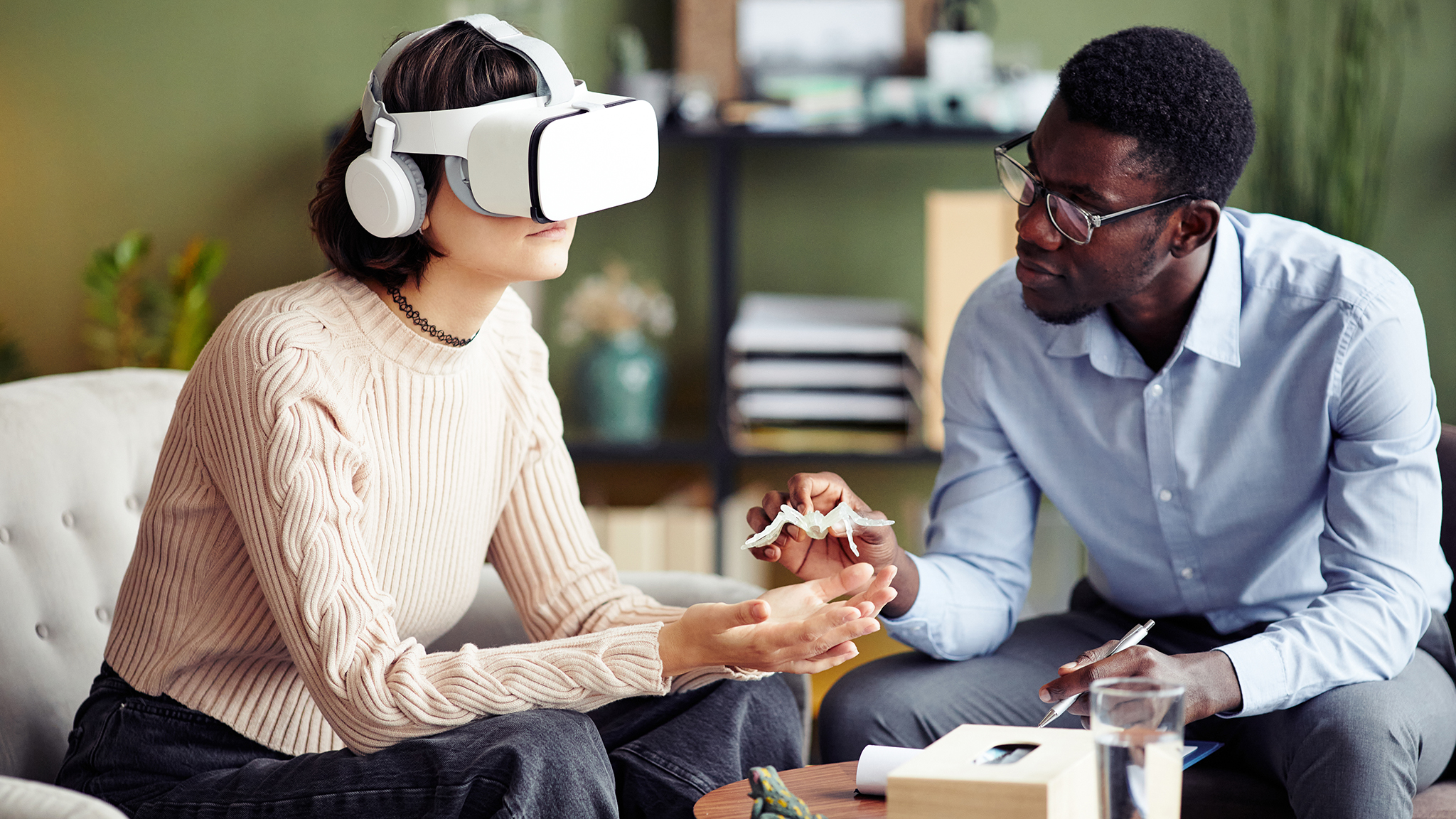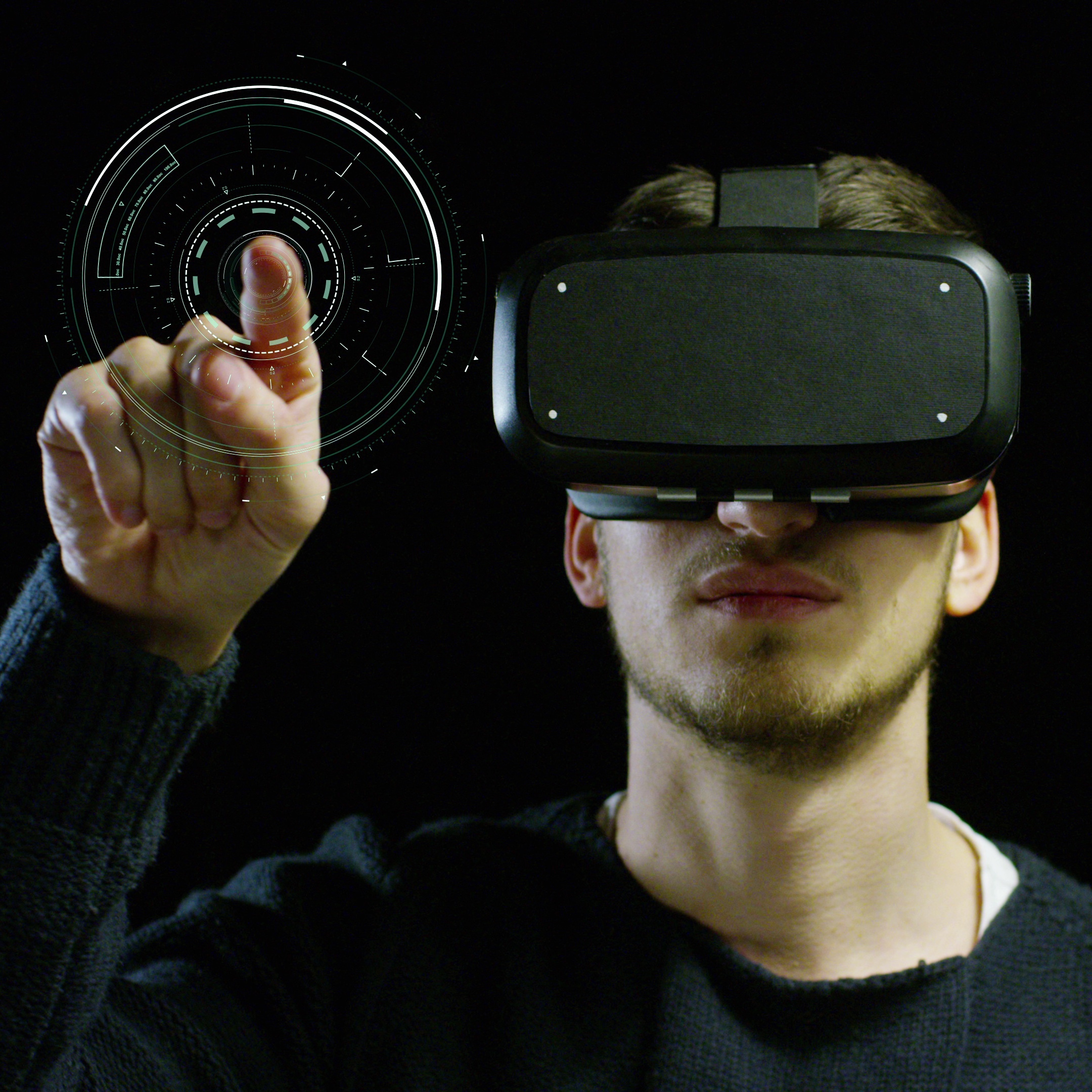Mind Over Matter: How Extended Reality is Changing the Face of Therapy
In a world increasingly captivated by digital experiences, Extended Reality (XR) is no longer the stuff of science fiction. It’s a transformative force sweeping across industries, from gaming and entertainment to education and healthcare. But what happens when this immersive technology steps into the realm of mental health? Welcome to the groundbreaking world of XR in therapy—a domain where virtual, augmented, and mixed realities are not just buzzwords but powerful tools reshaping the therapeutic landscape.
Imagine confronting your deepest fears or revisiting traumatic memories, not in the daunting real world but in a controlled, digital environment. That’s the promise of XR in therapy. It’s not just about flashy graphics or virtual worlds; it’s about creating personalized therapeutic experiences that can drive real change. Whether it’s Augmented Reality (AR) offering a new dimension to exposure therapy for phobias or Virtual Reality (VR) providing veterans a safe space to cope with PTSD, the applications are as diverse as they are impactful.
The potential of XR in healthcare is not just theoretical; a growing body of research backs it. A study published in Frontiers in Psychiatry found that VR interventions can be as effective as traditional treatments for anxiety disorders. And it’s not a fleeting trend. With the global XR healthcare market valued at USD 2.5 billion in 2022 and projected to grow at a CAGR of 18.8% from 2023 to 2030, it’s clear that this technology is here to stay.
So, as we navigate the complex corridors of mental health, XR in therapy emerges as a compelling, scientifically-backed avenue that’s poised to revolutionize how we approach treatment. Buckle up as we delve into this fascinating intersection of technology and mental health.
Bridging the Gap: How XR Enhances Traditional Therapies
While traditional therapies have proven effective for various mental health conditions, they often come with limitations. For instance, exposure therapy, a commonly used treatment for phobias and anxiety disorders, can be logistically challenging and emotionally overwhelming for patients. This is where XR steps in, offering a middle ground between the real and the virtual, thereby making therapy more approachable and less daunting.
Take, for example, the use of VR in treating acrophobia, the fear of heights. Traditional exposure therapy would involve taking the patient to a high place, which can be both logistically complicated and emotionally taxing. However, a study by Oxford VR, a spin-off from the University of Oxford, demonstrated that VR could be used to create realistic simulations where patients could face their fears in a controlled setting.
Similarly, AR has been employed to treat complex phobias like agoraphobia, where patients fear certain places or situations. A study published in the National Center for Biotechnology introduces an ‘AR-Therapist’ system that aims to overcome the limitations of traditional CBT such as the availability and expertise of therapists. It engages the patients in both real and virtual game environments, ensuring adaptability and personalization in the therapeutic settings.
By offering a bridge between traditional methods and futuristic solutions, XR in therapy is filling the gaps left by conventional treatments. It’s not just about adding a digital layer to existing practices but about enhancing their effectiveness and accessibility.
Understanding the Types of XR in Therapy
The term “Extended Reality” (XR) serves as an umbrella that encompasses various immersive technologies, each with its unique capabilities and applications in the realm of mental health therapy. Let’s dissect the three primary types of XR—Augmented Reality (AR), Virtual Reality (VR), and Mixed Reality (MR)—to understand their distinct roles in therapeutic interventions.
Augmented Reality (AR) in Therapy
AR overlays digital elements onto the real world, providing an enhanced yet grounded experience. In the context of mental health, AR has been particularly effective in exposure therapy for phobias. For instance, a person with arachnophobia might see a digital spider crawl across their real-world environment via AR glasses. This allows for a controlled exposure to the fear stimulus, making the therapy more personalized and less intimidating. AR’s potential extends to treating substance use disorders by simulating triggers in a safe setting, thereby helping individuals manage cravings.
However, the applications of AR in mental health therapy go beyond treating phobias. Here are some additional ways this technology is revolutionizing the field:
Immersive Remote Therapy
The advent of AR devices has made remote therapy not just feasible but incredibly effective. These devices can augment the patient’s environment with digital tools and experiences, making the therapeutic process more engaging and immersive. This is particularly beneficial in today’s world, where remote consultations are becoming the norm rather than the exception.
Creating Safe Spaces for Social Interactions
Social anxiety and depression-induced isolation can be debilitating. AR technology creates a safe, controlled environment where patients can practice social interactions. This is a game-changer for those who find real-world settings overwhelming and serves as a stepping stone to improved social functioning.
Confronting Triggers Head-On
Substance use disorders often involve triggers that can lead to relapse. AR can simulate these triggers in a controlled environment, allowing therapists and patients to work together in confronting and managing them. This real-world application of AR makes it a powerful tool in exposure therapy.
Enhanced Exposure Therapy
Traditional exposure therapy can be logistically challenging and emotionally taxing. AR offers a middle ground, providing an immersive yet controlled environment for confronting fears. This enhances the effectiveness of exposure therapy, making it more accessible to those who may find traditional methods too daunting.
Virtual Reality (VR) in Therapy
Unlike AR, VR immerses the user in a completely virtual environment. This has been groundbreaking in treating Post-Traumatic Stress Disorder (PTSD). Patients can revisit traumatic events in a controlled, virtual setting, which can be less distressing than facing the actual locations. VR’s immersive nature also makes it ideal for mindfulness and relaxation exercises. For example, a VR program can transport a patient to a serene beach, helping them escape the stressors of the real world. Studies have shown that VR-based interventions can result in a 34% reduction in stress and anxiety levels.
Mixed Reality (MR) in Therapy
MR combines elements of both AR and VR to create a more interactive and immersive experience. In a therapeutic context, MR could be used for social anxiety treatment. Imagine a scenario where the patient sees both digital avatars and real people in a social setting. They can practice social interactions in this mixed environment, which can be adjusted in real time by the therapist. MR offers the best of both worlds: the realism of AR and the immersion of VR.
Applications Across the Spectrum
Cognitive Behavioral Therapy (CBT): All three types of XR can be integrated into CBT practices. For example, AR can simulate social scenarios for practicing coping mechanisms, while VR can immerse the patient in environments that challenge their cognitive distortions.
Physical Rehabilitation: XR technologies are also making headway in physical therapy. MR, for instance, can superimpose digital exercise guidelines into the real world, making the rehabilitation process more interactive and accurate.
Pain Management: VR has been used to divert patients’ attention from pain by immersing them in engaging activities or visual experiences. This has been particularly effective in burn treatment, where patients reported significantly reduced levels of pain.
Understanding the nuances between AR, VR, and MR is crucial for both clinicians and patients to make informed decisions about which technology is most suitable for their specific therapeutic needs. As XR technologies continue to evolve, their applications in mental health therapy are bound to expand, offering more personalized, effective, and accessible treatment options.
The Ethical and Practical Challenges of XR in Therapy
While the potential of XR in therapy is undeniably transformative, it’s crucial to address the ethical and practical challenges that come with its implementation. Ignoring these aspects could undermine the technology’s efficacy and patient trust.
Data Privacy and Security
The immersive nature of XR technologies often requires the collection of sensitive data, such as biometric information and emotional responses. Ensuring the privacy and security of this data is paramount. Regulatory frameworks like GDPR and HIPAA are starting to adapt to these new technologies, but there’s still a long way to go.
Accessibility and Cost
High-quality XR equipment can be expensive, potentially limiting its accessibility. While smartphone-based AR applications offer a more affordable alternative, they may provide a different level of immersion and effectiveness than specialized XR hardware.
Ethical Considerations in Treatment
The use of XR in therapy raises ethical questions around informed consent, especially when simulating potentially distressing scenarios. Patients must be fully aware of what the XR experience entails and should have the option to withdraw at any time.
Therapist Training and Adaptation
For XR to be effectively integrated into therapy, clinicians must be trained to navigate these new digital landscapes. This includes understanding the technology’s limitations and knowing when traditional methods may be more appropriate.
Technological Limitations
While XR offers a new frontier in mental health treatment, it’s not without its limitations. Issues like motion sickness in VR or the potential for technical glitches can disrupt the therapeutic process and need to be accounted for in treatment plans.
By acknowledging and addressing these challenges head-on, the mental health community can better prepare for the widespread adoption of XR in therapy. As the technology matures, so too will our understanding of how to ethically and effectively implement it in a therapeutic context.
Conclusion: The Transformative Power of XR in Therapy and What Lies Ahead
As we wrap up our exploration of XR in therapy, it’s clear that we’re at the cusp of a significant transformation in mental healthcare. The technology is not just an add-on; it’s becoming an integral part of therapeutic strategies, filling gaps left by traditional methods and offering new avenues for treatment.
Looking ahead, several trends are likely to shape the future of XR in therapy:
-
- ● Personalization through AI: The integration of Artificial Intelligence could allow XR platforms to adapt in real-time to patients’ responses, making each therapeutic session more effective.
-
- ● Telehealth Integration: As remote healthcare becomes more prevalent, XR could play a pivotal role in providing high-quality therapy to underserved areas, breaking down geographical barriers.
-
- ● Multi-Sensory Experiences: Advances in haptic technology and spatial audio could make XR therapies more immersive, potentially increasing their efficacy.
-
- ● Data-Driven Insights: The ability to collect real-time data during therapy sessions could provide clinicians with valuable insights, enabling more targeted and effective treatments.
- ● Ethical and Regulatory Frameworks: As the technology matures, ethical guidelines and regulations will need to keep pace to ensure patient safety and data privacy.
While these developments are promising, they also call for a multidisciplinary approach. Clinicians, technologists, and policymakers must collaborate to ensure that the technology is developed and deployed in a manner that is ethical, effective, and equitable.
In conclusion, XR in therapy is more than just a technological innovation; it’s a tool with the potential to make mental healthcare more personalized, accessible, and effective. However, the journey ahead is challenging. As we navigate issues like data privacy, ethical considerations, and clinical validation, the focus must remain on leveraging XR to enhance, not replace, the human elements of therapy.



